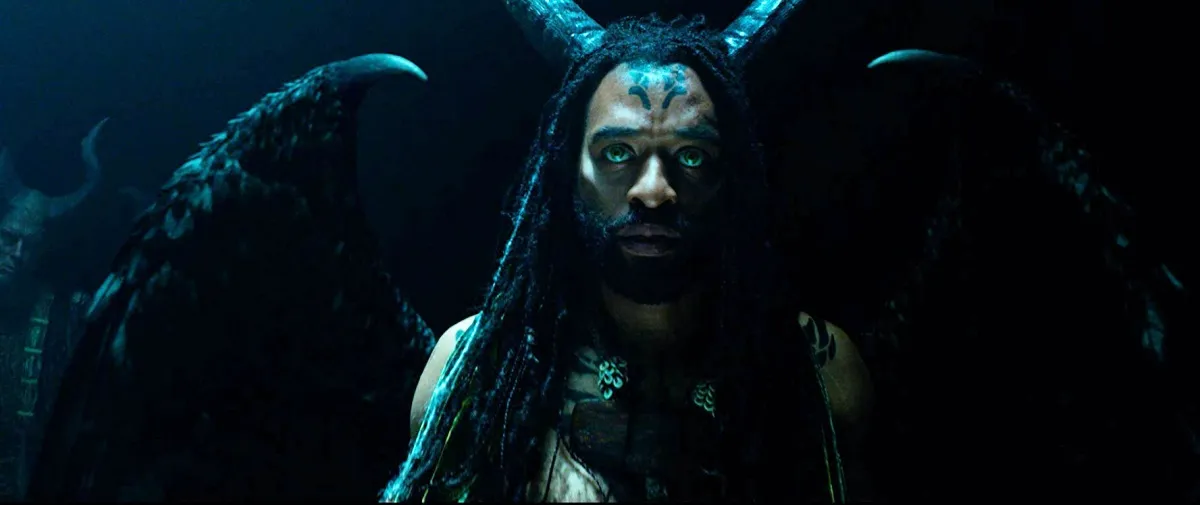Maleficent: Mistress of Evil Deals in Weird Magical Negro Tropes

**Spoilers for Maleficent: Mistress of Evil.**
Last week, I saw the new Disney film Maleficent: Mistress of Evil, a movie I was looking forward to because of my love for 2014’s Maleficent and the fact that I adored the cast. While the entire film felt lackluster to me, what really took me out was the Magical Negro-style tropes surrounding the Dark Fae, and specifically, the character of Conall played by Black British actor Chiwetel Ejiofor.
In the film, Conall saves Maleficent after she is wounded by an iron bullet fired by Queen Ingrith’s servant. He’s the leader of the Dark Fae and is looking for a peaceful way for humans and fairies to exist—unlike Ed Skrein’s Borra, who wants war. Conall provides exposition for who the Dae Fae are, tells Maleficent that she is the most powerful of them all because she’s the Dark Phoenix, and then, when Maleficent is attacked again, Conall gives his life to save her.
When this scene played out before me, I rolled my eyes, because it was such a cliche that I almost couldn’t believe I was seeing such an on-brand Magical Negro character in 2019.
To explain, a Magical Negro is not just a character who is Black and happens to be magical. It refers to, as coined by Spike Lee, a plot device character that serves to help the white protagonist get out of trouble, usually through helping the white character become a better person and providing them some mystical insight. Conall is all of those things, but checks one box, in particular, that irritates me: He doesn’t use any magic to protect himself.
We see from the film that Dark Fae have different powers. Even though Maleficent is the most powerful, we see Borra use magic and the others as well. When Conall goes to save Maleficent, he doesn’t do anything to try to dodge or use magic to protect them; he just lays down his life and takes several bullets in this back for a literal white savor.
As he’s dying, we seem him surrounded by non-white fae, until he calls for Maleficent to stay with him as he dies. His death serves as motivation for the third act. He’s just a prop in the movie, and it’s jarring to watch. Part of the reason I was looking forward to this movie was seeing what exactly his character would do, and while I had my reservations, I wanted to be optimistic that at least he’d be portrayed as an attractive love interest. Instead, he’s just a Magical Negro stock character from top to bottom.
Plus, that wig. Lord.
In my review, I mentioned how the Dark Fae are supernatural stand-ins for a lot of marginalized groups and how a common trope in fantasy is to take the experiences of the marginalized people and map them onto privileged people. Maleficent 2 is guilty of this in a more blatant way than I expected. I’m sure they wanted to make all of those connections when crafting the script and it was nice seeing so much diversity on screen, but it isn’t real representation if they are props.
(image: Disney)
Want more stories like this? Become a subscriber and support the site!
—The Mary Sue has a strict comment policy that forbids, but is not limited to, personal insults toward anyone, hate speech, and trolling.—
Have a tip we should know? tips@themarysue.com